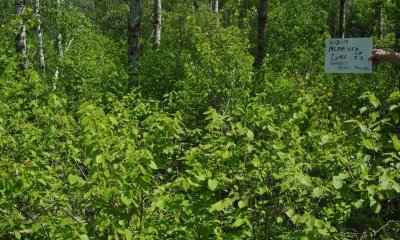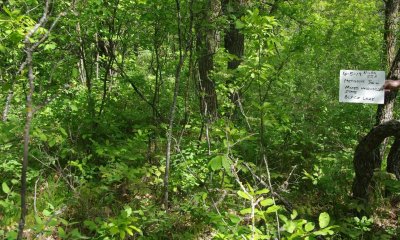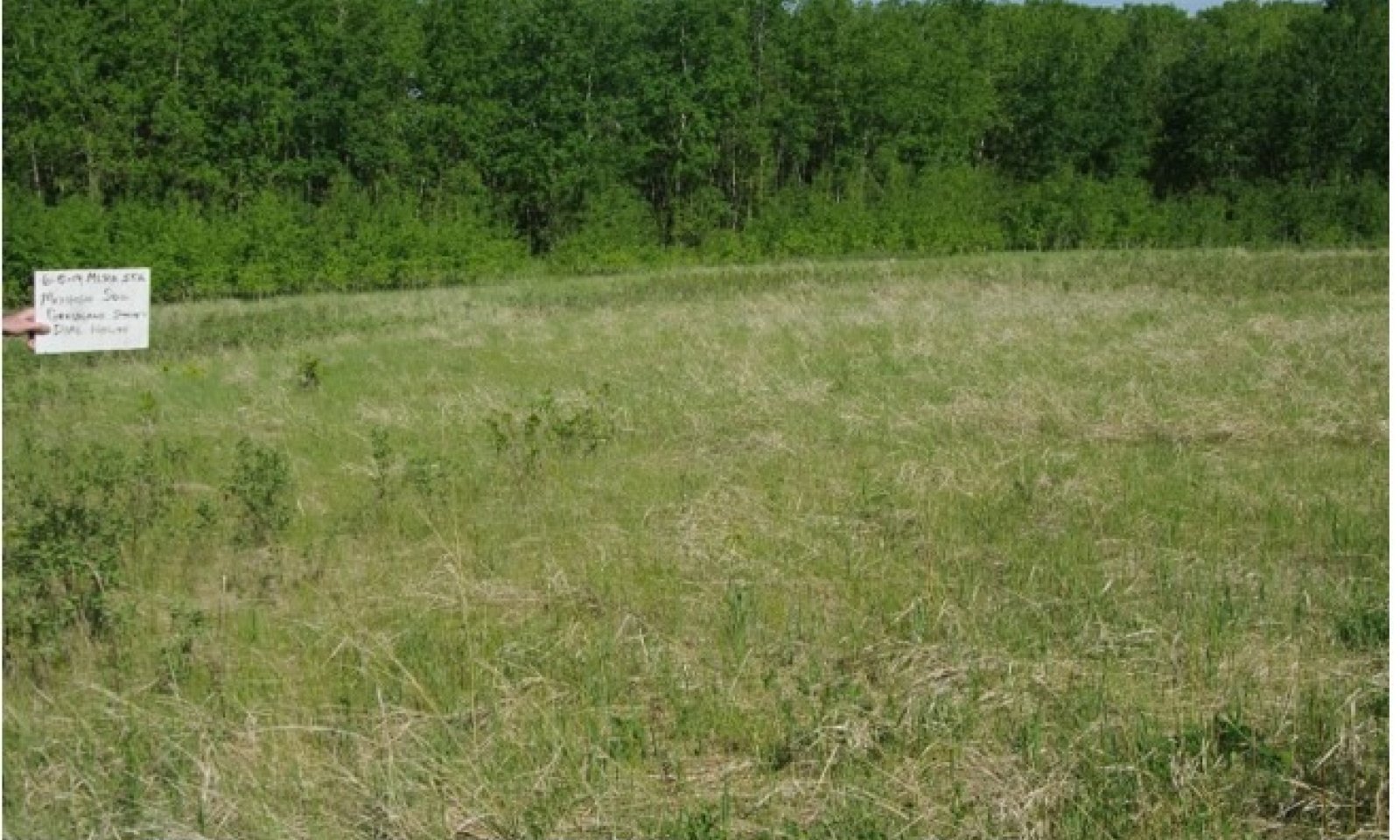
Upland Hardwood Forest
Scenario model
Current ecosystem state
Select a state
Management practices/drivers
Select a transition or restoration pathway
-
Transition T1A
Invasion by exotic grasses and forbs
More details -
Transition T1B
Removal of all disturbances
More details -
Restoration pathway T2A
Removal of all disturbances
More details -
Transition T2B
Clear Cutting with heavy continuous grazing.
More details -
Transition R3A
Re-establishment of natural disturbance regimes (i.e. prescribed burning).
More details -
Transition T3A
Clear Cutting with heavy continuous grazing
More details -
Restoration pathway R4A
Tree-Shrub Establishment (forestry planting).
More details -
Restoration pathway R4B
Tree-Shrub Establishment (forestry planting).
More details -
Transition R5B
Tree-Shrub Establishment (forestry planting)
More details -
Restoration pathway R5A
Range, pasture, or hayland planting.
More details -
Restoration pathway T6A
Elimination of annual cropping.
More details -
No transition or restoration pathway between the selected states has been described
Target ecosystem state
Select a state
State 1
Reference State
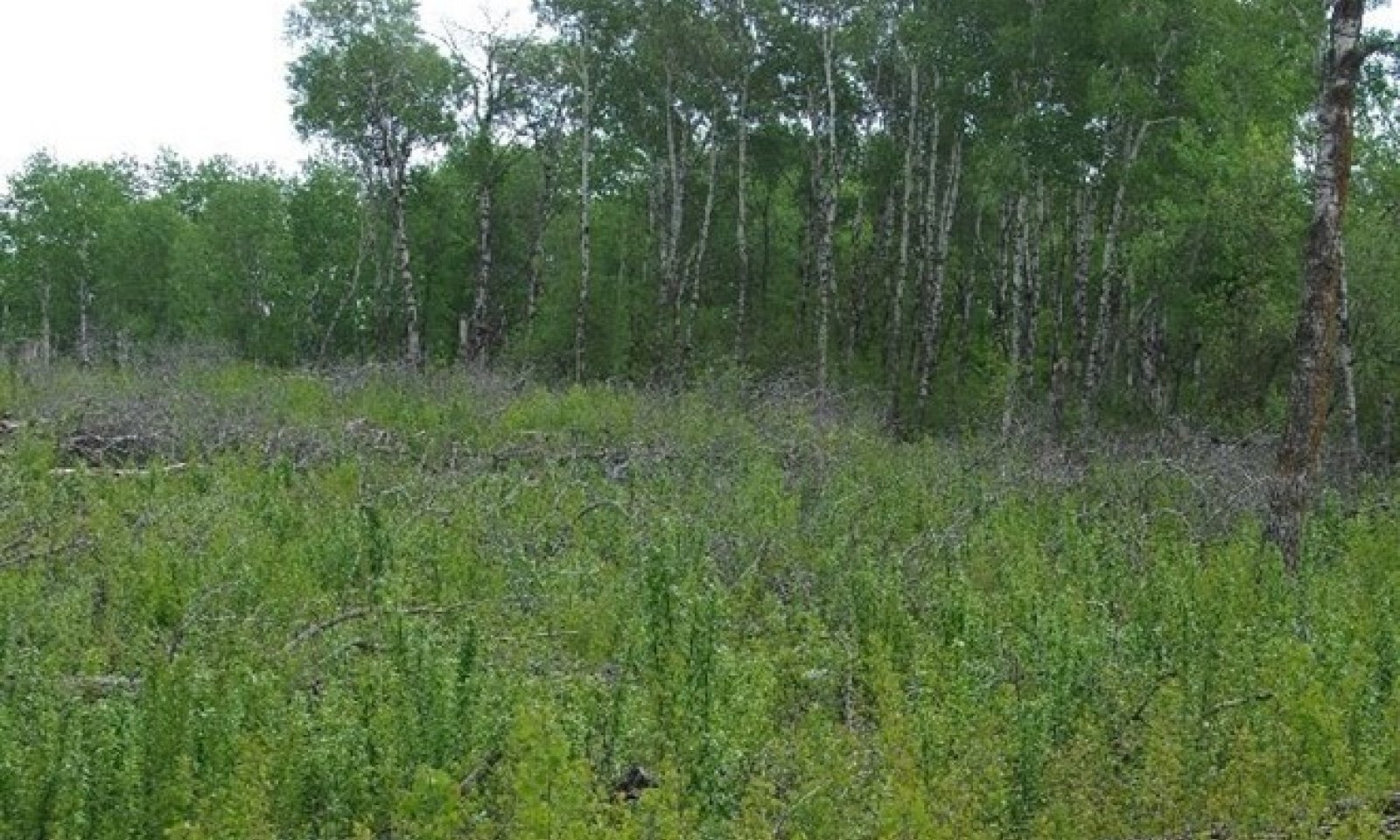

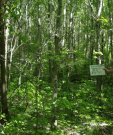

Description
This state may be characterized as a quaking aspen dominated forest with a beaked hazel understory. Plant community phases occur as a mosaic across the site resulting from variations in the frequency and intensity of fires and other disturbances (e.g., blowdown, grazing/browsing by native ungulates, beaver). The major differences in the community phases are due to the age classes of quaking aspen predominant on the site resulting from these disturbances.
The Reference State represents the natural range of variability that dominated the dynamics of this ecological site prior to European influence. This site is dominated by quaking aspen with a dense understory of beaked hazel. Other associated trees included green ash and boxelder, with bur oak reaching its maximum importance on south-facing slopes and paper birch reaching its greatest importance on north-facing slopes. Chokecherry, Saskatoon serviceberry, nannyberry, highbush cranberry, downy arrowwood, and prickly wild rose are commonly associated shrubs.
Graminoids common to this state are limited largely to sedges (e.g., Sprengel’s, Pennsylvania), rough ricegrass, and fringed brome. Common forbs include wild sarsaparilla, agrimony, anise-root, black snakeroot, veiny meadow-rue, starry false lily of the valley, mayflower, golden zizia, bedstraws, and violets. Herbaceous diversity and production are inversely related to canopy shading. In older stands, canopy cover may be 90% or more, supporting an herbaceous component of mainly wild sarsaparilla and sedges. However, gaps in canopy cover (such as that created by heart rot and windthrow) result in increased light penetration and may lead to an increase in herbaceous diversity and production.
Characteristics and indicators
The reference state may still exist; however, due to changes in disturbances and other environmental factors (particularly the widespread occurrence of exotic species), it may be rare.
Resilience management
If intact, the reference state should probably be managed with current disturbance regimes which has permitted the site to remain in reference condition, as well as maintaining the quality and integrity of associated ecological sites. Maintenance of the reference state is contingent upon a monitoring protocol to guide management.
Submodel
Description
This state may be described as consisting of similar community phases as is found in State 1: Reference State (i.e., Community Phases 1.1, 1.2, 1.3) but has been invaded by exotic plants. Also, the disturbances associated with the introduction of domestic livestock may markedly alter the native component and exacerbate the invasion by exotic plants (e.g., Community Phases 2.4 and 2.5). Initially, these changes are more structural than compositional. Domestic livestock establish travel corridors in the forest, as well as use the forest for shade and rest, which creates openings in the shrub component of the community. Over time, weaker stemmed shrubs (such as chokecherry, Saskatoon serviceberry, and highbush cranberry) decrease in abundance due to the increased disturbance. As a result, beaked hazel (which has stronger and more resistant stems) becomes even more dominant.
Because the maximum height of grazing/browsing for cattle is about five feet, resprouts of quaking aspen and other woody vegetation within reach of the domestic livestock are subject to repeated herbivory, which will reduce recruitment. Continued season-long grazing by domestic livestock will lead to changes in the structure, composition, and production of the site.
With a more open shrub component, increased light penetration to the forest floor leads to greater herbaceous production, particularly by sedges. The disturbance associated with continued season- long grazing exacerbates the invasion of the site by exotic plants.
Presently the distribution of common buckthorn in MLRA 55A has been relatively limited. However, it is spreading; due to its invasive nature and habit of displacing native understory species, it is a threat to biodiversity. As a result, periodic monitoring for the species is recommended; if the plant is encountered, control measures implemented.
Characteristics and indicators
The presence of trace amounts of exotic cool-season grasses (e.g., Kentucky bluegrass and smooth brome) indicates a transition from State 1 to State 2. The presence of exotic biennial or perennial forbs (e.g., common dandelion, red clover, white clover, and black medic) may not, on their own, indicate a transition from State 1 to State 2 but may facilitate that transition.
Resilience management
The invasion of these exotic grasses is associated with stand clearing activities such as shearing or intensive fire which removes tree canopy cover. Canopy closure may reduce or eliminated exotics species. To maintain State 2.0 Native/Invaded State, forest management practices need to be completed. Livestock grazing is incompatible with maintaining a forest dominated state; it will likely result in a pathway to an open canopy (Plant Community Phases 2.4/2.5).
Submodel
Description
This state may develop under conditions of long-term lack of disturbance (>50 years), allowing the mature quaking aspen dominated forest to become decadent and be replaced by green ash and bur oak along with associates of boxelder and paper birch. Quaking aspen is a shade intolerant species, thus generally regarded as an early successional species that would give way to more shade tolerant species in later successional states. As such, in a traditional successional pathway on this site quaking aspen would be expected to be replaced by more shade tolerant species (such as green ash, bur oak, and boxelder). However, in some instances quaking aspen may persist. It is unclear to what extent quaking aspen may remain in this community.
Considerable variation may exist in the relative abundance of the dominant tree species in this state. Those variations appear to be a function of variations in slope, precipitation, and other natural and anthropogenic factors. For example, bur oak may dominate on a south-facing slope while paper birch may predominate on a north-facing slope.
Characteristics and indicators
The dominance of woody species (by cover and production) distinguishes this state from other herbaceously dominated states.
Resilience management
This state is resistant to change in the long-term absence of fire. Restoration efforts would require the use of prescribed fire and tree/shrub planting. Considerable time, effort and monetary resources will be required to restore to other States.
Submodel
Description
Clear-cutting, combined with long-term heavy grazing, maintains a grass dominated site. Clear- cutting for the purpose of livestock grazing may also transition this site to grassland. This state may also occur with the successful seeding to native and/or introduced grasses from State 5.0 Go Back, with or without introduced legumes or native forbs (R5A).
Characteristics and indicators
This state is dominated by seeded, native or introduced, perennial herbaceous species.
Resilience management
Successful grass seeding, via R5A, will be based on the grass and forb species seeded. Management to maintain this site will be needed to avoid encroachment of woody species, dependent upon managers’ goals.
Submodel
Description
This state typically results from the abandonment of cropland, hayland, or residences/farmsteads. Vegetation is typically dominated by Kentucky bluegrass and smooth brome. Common associates include western snowberry, wild rose, northern bedstraw, common dandelion, Canada goldenrod, common yarrow, and Canada thistle. Sprouts from adjacent stands of aspen or beaked hazel often encroach onto the site, as well as seedlings of adjacent green ash.
Characteristics and indicators
Tillage has destroyed the native plant community, altered soil structure and biology, reduced soil organic matter, and resulted in the formation of a tillage induced compacted layer which is restrictive to root growth. Removal of perennial grasses and forbs results in decreased infiltration and increased runoff.
Resilience management
Continued tillage will maintain the state. Control of noxious weeds will be required.
Submodel
Mechanism
This is the transition from the Reference State, to the Native/Invaded State. The transition is initiated by the establishment of exotic plants. Kentucky bluegrass, smooth brome, common dandelion, red clover, white clover, and black medic are among the more common exotics.
Constraints to recovery
(i.e. variables or processes that preclude recovery of the former state). Current knowledge and technology will not facilitate a successful restoration to Reference State.
Mechanism
This is the transition from the Reference State to the Mixed Hardwood State due to removal of disturbances such as fire, resulting in the change from a quaking aspen dominated forest to that of more shade tolerant species characterized by green ash and bur oak, with associates of paper birch and boxelder.
Constraints to recovery
Current knowledge and technology will not facilitate a successful restoration to Reference State.
Mechanism
This is the transition from State 2: Native/Invaded State to State 3: Mixed Hardwood State by the removal of all disturbances. Exotic cool season grasses and forbs may become minor components as the tree canopy increases and shading allows for species such as sedges to increase.
Context dependence
Decadent quaking aspen (over 50 years old) or loss of aspen entirely may not recovery to State 2.0 Native/Invaded State.
Mechanism
This is the transition from the State 2: Native/Invaded State to State 4: Grassland State by clear- cutting with heavy continuous grazing.
Constraints to recovery
Labor, time, and expense, along with long term management needs (via R4B) may limit success.
Mechanism
Reestablishment of natural disturbance regimes (i.e. prescribed burning) may enable the Mixed Hardwood State to return to the Native/Invaded State assuming a small amount of quaking aspen is present in the community, or comes into the site vegetatively from the periphery, by seed, or planting.
Context dependence
Shearing needs to be completed at a time when the soils are frozen to minimize ground disturbance. Size of an area shearing is dependent on management needs
Mechanism
This transition is the result of clear-cutting with continuous heavy grazing, from State 3: Mixed Hardwoods to State 4: Grassland State.
Constraints to recovery
Labor, time, and expense, along with long term management needs (via R4B) may limit success.
Mechanism
A Tree-Shrub Establishment (forestry planting) may lead to the restoration of State 4: Grassland State to State 2: Native/Invaded State. It is similar to that of R4B but differs in species of trees planted.
Context dependence
Labor, time, and expense of tree and shrub planting, along with long-term management needs (via R4A), may limit success. Aspen encroachment will slowly occur from the edges of existing stands. Over time, annual and pioneer perennial plants, along with exotics, may be outcompeted by encroaching aspen as canopy increases.
Mechanism
A Tree-Shrub Establishment (forestry planting) may lead to the restoration of State 4: Grassland State to State 2: Native/Invaded State. It is similar to that of R4A but differs in species of trees planted.
Context dependence
Labor, time, and expense of tree and shrub, planting along with long term management needs via R4A, may limit success. Aspen encroachment will slowly occur from the edges of existing stands. Over time, annual and pioneer perennial plants (along with exotics) will be outcompeted by encroaching aspen as canopy increases.
Mechanism
This restoration from the State 5: Go-Back State to the State 3: Mixed Hardwood State may occur with a successful Tree-Shrub Establishment (forestry planting). A transition to Mixed Hardwood State may also be possible only with the removal of disturbances allowing trees/shrubs to establish via seed sources or encroach vegetatively from adjacent sites.
Context dependence
Labor, time, and expense of tree and shrub planting, along with long term management needs (via R4A), may limit success. Aspen encroachment will slowly occur from the edges of existing stands. Over time, annual and pioneer perennial plants (along with exotics) will be outcompeted by encroaching aspen as canopy increases.
Mechanism
This restoration pathway from State 5: Go-Back State to State 4: Grassland State can be accomplished with a range, pasture, or hayland planting. Prescribed grazing, burning, haying, brush management (mechanical and/or chemical) will generally be necessary to achieve the desired plant community phase.
Context dependence
A successful range planting will include proper seedbed preparation, weed control (both prior to and after the planting), selection of adapted native species representing functional/structural groups inherent to the State 1, and proper seeding technique.
Management (e.g., prescribed grazing, prescribed burning) during and after establishment must be applied in a manner that maintains the competitive advantage for the seeded native species. Adding non-native species can impact the above and below ground biota. Some evidence suggests the addition of exotic legumes to the seeding mixture may favor exotic cool-season grass expansion/invasion.
Maintaining State 4.0 Grassland State may also require a method of brush management that will be site specific; generally, the goal would be to apply the pesticide and mechanical control (either singularly or in combination) in a manner that shifts the competitive advantage from the targeted control species to the native grasses and forbs. The control method(s) should be as specific to the targeted control species as possible to minimize impacts to non-target species.
Mechanism
This transition is from any plant community to State 5: Go-Back State. It is most commonly associated with the cessation of cropping without the benefit of range planting, resulting in a “go-back” situation. Soil conditions can be quite variable on the site, in part due to variations in the management/cropping history (e.g., development of a tillage induced compacted layer (plow pan), erosion, fertility, and/or herbicide/pesticide carryover). Thus, soil conditions should be assessed when considering restoration techniques.
Model keys
Briefcase
Add ecological sites and Major Land Resource Areas to your briefcase by clicking on the briefcase (![]() ) icon wherever it occurs. Drag and drop items to reorder. Cookies are used to store briefcase items between browsing sessions. Because of this, the number of items that can be added to your briefcase is limited, and briefcase items added on one device and browser cannot be accessed from another device or browser. Users who do not wish to place cookies on their devices should not use the briefcase tool. Briefcase cookies serve no other purpose than described here and are deleted whenever browsing history is cleared.
) icon wherever it occurs. Drag and drop items to reorder. Cookies are used to store briefcase items between browsing sessions. Because of this, the number of items that can be added to your briefcase is limited, and briefcase items added on one device and browser cannot be accessed from another device or browser. Users who do not wish to place cookies on their devices should not use the briefcase tool. Briefcase cookies serve no other purpose than described here and are deleted whenever browsing history is cleared.
Ecological sites
Major Land Resource Areas
The Ecosystem Dynamics Interpretive Tool is an information system framework developed by the USDA-ARS Jornada Experimental Range, USDA Natural Resources Conservation Service, and New Mexico State University.

